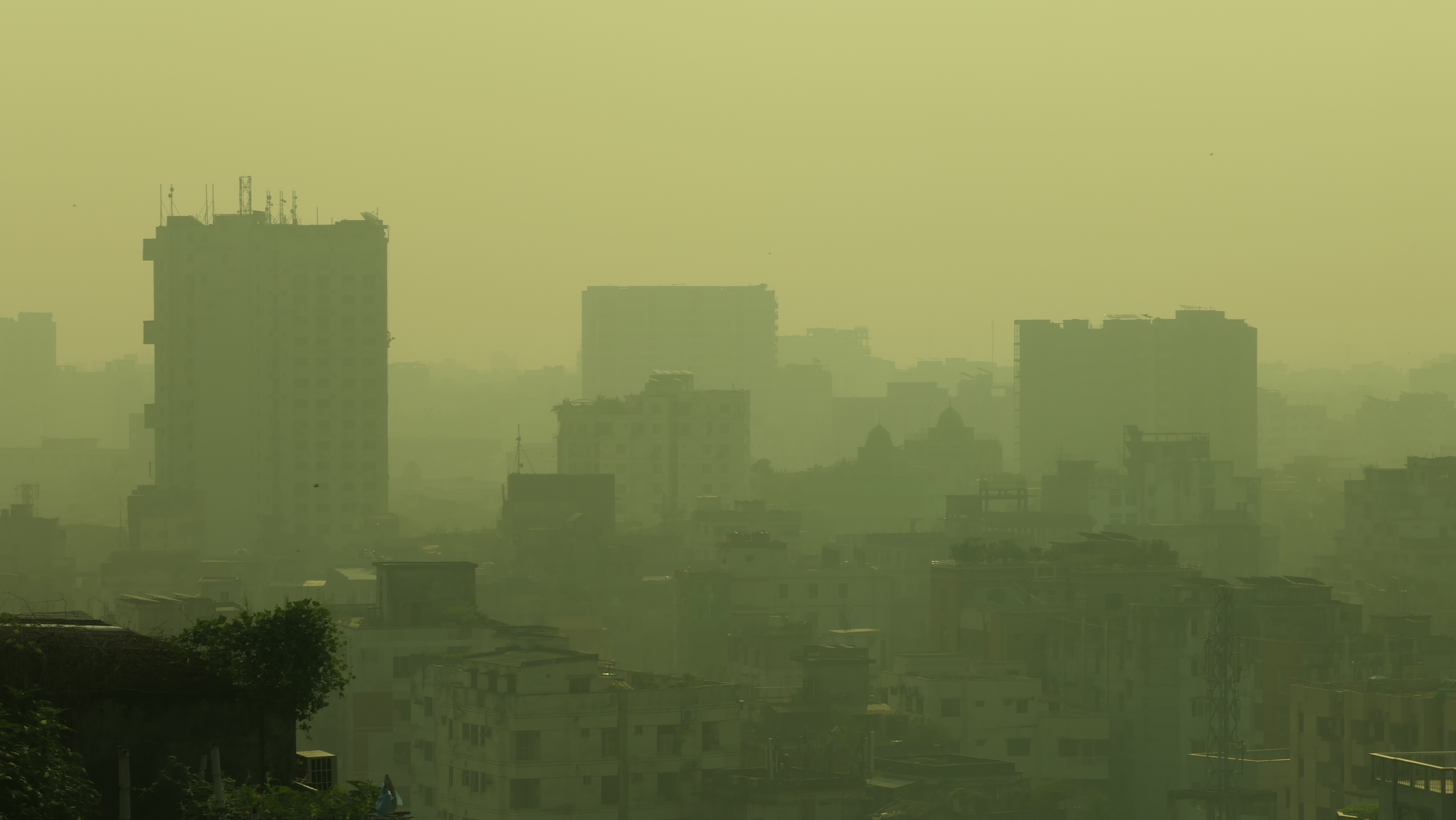Air Pollution World’s Worst Public Health Threat, Report Says
Air Pollution World's Worst Public Health Threat, Report Says Planetizen


Air Pollution: The Most Significant Public Health Threat

Air pollution poses the most significant public health threat globally, as highlighted in the annual Air Quality Index report by the Energy Policy Institute at the University of Chicago (EPIC). The report emphasizes the importance of meeting the World Health Organization’s guideline limits for fine particulate pollution, which could potentially extend the average individual’s lifespan by 2.3 years.
Impact on Health and Sustainable Development Goals
The study, discussed in an article by Issam Ahmed for Phys.org, reveals that air pollution from various sources such as vehicles, industries, and wildfires contributes to the prevalence of lung disease, heart disease, strokes, and cancer. This alarming situation directly affects the achievement of several Sustainable Development Goals (SDGs), including:
- SDG 3: Good Health and Well-being
- SDG 11: Sustainable Cities and Communities
- SDG 13: Climate Action
Ahmed emphasizes that Asia and Africa bear the greatest burden of air pollution while having inadequate infrastructure to provide citizens with timely and accurate data. Furthermore, these regions receive minimal support from the limited global philanthropic resources available.
Countries with Severe Air Pollution
Among the countries facing the worst air pollution levels globally, Bangladesh, India, Nepal, and Pakistan rank at the top. However, the article also highlights China’s significant progress in improving air quality. Between 2013 and 2021, China witnessed a remarkable 42.3% reduction in air pollution. If these improvements are sustained, the average Chinese citizen could potentially live 2.2 years longer.
Impact on the United States
In the United States, wildfires have become a major contributor to deteriorating air quality in certain regions. For instance, during California’s historic wildfire season in 2021, Plumas County experienced an average concentration of fine particulate matter more than five times higher than the WHO guideline.
Addressing air pollution is crucial for safeguarding public health and achieving the SDGs. It requires collaborative efforts from governments, organizations, and individuals worldwide to implement effective measures that reduce pollution levels and promote sustainable development.
SDGs, Targets, and Indicators
-
SDG 3: Good Health and Well-being
- Target 3.9: By 2030, substantially reduce the number of deaths and illnesses from hazardous chemicals and air, water, and soil pollution and contamination.
- Indicator 3.9.1: Mortality rate attributed to household and ambient air pollution.
- Indicator 3.9.2: Mortality rate attributed to unsafe water, unsafe sanitation, and lack of hygiene (WASH).
-
SDG 11: Sustainable Cities and Communities
- Target 11.6: By 2030, reduce the adverse per capita environmental impact of cities, including by paying special attention to air quality and municipal and other waste management.
- Indicator 11.6.2: Annual mean levels of fine particulate matter (e.g., PM2.5 and PM10) in cities (population-weighted).
-
SDG 13: Climate Action
- Target 13.2: Integrate climate change measures into national policies, strategies, and planning.
- Indicator 13.2.1: Number of countries that have integrated mitigation, adaptation, impact reduction, and early warning measures into national policies, strategies, and planning.
Analysis
The issues highlighted in the article are primarily related to air pollution and its impact on public health. Based on this, the following SDGs, targets, and indicators can be identified:
1. SDG 3: Good Health and Well-being
The article emphasizes that air pollution is a significant public health threat. Meeting the World Health Organization’s guideline limits for fine particulate pollution would add 2.3 years to the expected lifespan of the average individual. This aligns with SDG 3, which aims to ensure good health and well-being for all.
- Target 3.9: By 2030, substantially reduce the number of deaths and illnesses from hazardous chemicals and air, water, and soil pollution and contamination.
- Indicator 3.9.1: Mortality rate attributed to household and ambient air pollution.
- Indicator 3.9.2: Mortality rate attributed to unsafe water, unsafe sanitation, and lack of hygiene (WASH).
2. SDG 11: Sustainable Cities and Communities
The article mentions that air pollution is worsened by factors such as vehicles, industry, and wildfires. It also highlights the need for infrastructure to deliver timely and accurate data on air quality. These issues are connected to SDG 11, which focuses on creating sustainable cities and communities.
- Target 11.6: By 2030, reduce the adverse per capita environmental impact of cities, including by paying special attention to air quality and municipal and other waste management.
- Indicator 11.6.2: Annual mean levels of fine particulate matter (e.g., PM2.5 and PM10) in cities (population-weighted).
3. SDG 13: Climate Action
The article briefly mentions the impact of wildfires on air quality in the United States. This relates to SDG 13, which focuses on taking urgent action to combat climate change and its impacts.
- Target 13.2: Integrate climate change measures into national policies, strategies, and planning.
- Indicator 13.2.1: Number of countries that have integrated mitigation, adaptation, impact reduction, and early warning measures into national policies, strategies, and planning.
Table: SDGs, Targets, and Indicators
| SDGs | Targets | Indicators |
|---|---|---|
| SDG 3: Good Health and Well-being | Target 3.9: By 2030, substantially reduce the number of deaths and illnesses from hazardous chemicals and air, water, and soil pollution and contamination. | Indicator 3.9.1: Mortality rate attributed to household and ambient air pollution. Indicator 3.9.2: Mortality rate attributed to unsafe water, unsafe sanitation, and lack of hygiene (WASH). |
| SDG 11: Sustainable Cities and Communities | Target 11.6: By 2030, reduce the adverse per capita environmental impact of cities, including by paying special attention to air quality and municipal and other waste management. | Indicator 11.6.2: Annual mean levels of fine particulate matter (e.g., PM2.5 and PM10) in cities (population-weighted). |
| SDG 13: Climate Action | Target 13.2: Integrate climate change measures into national policies, strategies, and planning. | Indicator 13.2.1: Number of countries that have integrated mitigation, adaptation, impact reduction, and early warning measures into national policies, strategies, and planning. |
Behold! This splendid article springs forth from the wellspring of knowledge, shaped by a wondrous proprietary AI technology that delved into a vast ocean of data, illuminating the path towards the Sustainable Development Goals. Remember that all rights are reserved by SDG Investors LLC, empowering us to champion progress together.
Source: planetizen.com

Join us, as fellow seekers of change, on a transformative journey at https://sdgtalks.ai/welcome, where you can become a member and actively contribute to shaping a brighter future.







